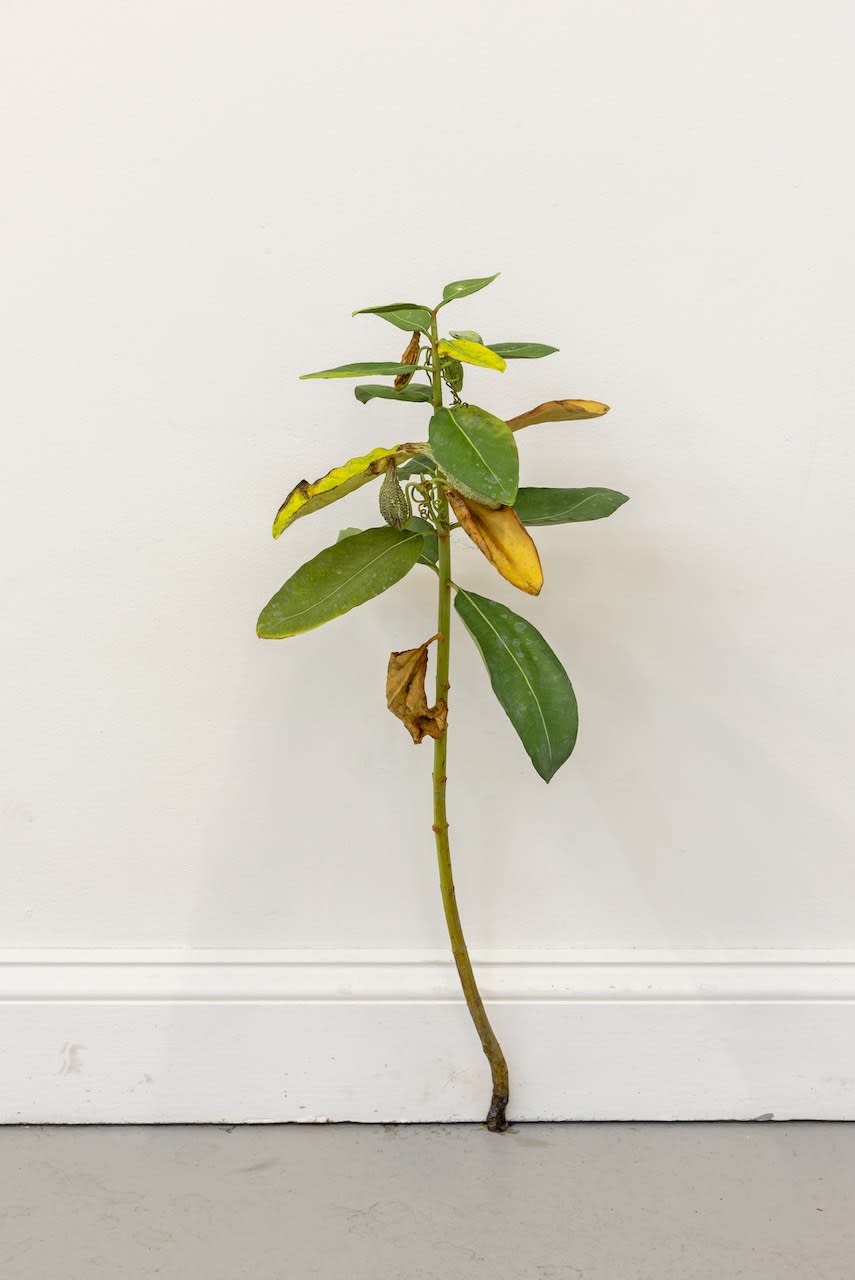
Tony Matelli United States, b. 1971
26 x 10 x 11 in
Exhibitions
Entrouverte by 019 at LLS Paleis, Antwerp - September - November, 2023Literature
Weeds are markers along the paths of culture—of cultivation and its failureWeeds are markers along the paths of culture—of cultivation and its failure—and their sculptural representation carries social and political charge, however ambiguous. Transformed by concept, process, multiplication and representation, Matelli’s weeds are vessels of indeterminate meaning open to a variety of simultaneous interpretations…. They seem to be one thing, yet mean something else altogether. Matelli’s weeds are object-metaphors, stand-ins for stray, elusive truths.
Lisa Fischman
Director of the Davis Museum at Wellesley College from Tony Matelli: Abandon, published by University at Buffalo Art Gallery Research Center in Art and Culture, 1999
____
I wanted them to be experienced, first, as simple weeds.
I wanted them to be experienced, first, as simple weeds. I didn’t want them to be experienced as a sculpture—I hoped there would be very little art mediation, and that’s true for a lot of my work. The Weeds really work this way; I don’t think people initially engage with them as sculpture, I think people initially engage with them as real weeds, which allows them to function in the mind of the viewer as real interlopers, strange and out of place.
Tony Matelli
Interview with Marie Nipper, Chief Curator at ARoS from A Human Echo, published by ARoS
____
What belongs here and not there?
I’m not interested in critique—I never saw the Weeds that way. I intended it to be about how things are valued and how we assign value in culture. What is a weed and what’s a cultivated plant? What is acceptable and unacceptable behavior? What belongs here and not there? For me, it was more about situational or contextual correctness, and other things, too, like feeling out of place, or persistence. These things all have a deep personal resonance for me. This work presents a spirit embracing rebellious thought—I see it as motivational in that sense—but there is also an aspect of doom in the work. Depending on what the viewer brings to it, it can be both things.
Tony Matelli
interview with Howie Chen, Independent Curator and Professor at NYU Steinhardt from Glass of Water, published by Walter Koenig Books
____
Vessels of indeterminacy
Casting individual specimens in sets of multiples and installing them directly in the gallery floor, Matelli transformed weeds—through concept, process, multiplication and re-presentation—into vessels of indeterminacy. Seeming to be one thing, yet meaning something else altogether, they became wayward object-metaphors, regaining the "sensuous force" Nietzsche prized as they were revealed to be illusions. Matelli’s installation—“an art installation that does not at all resemble art”—turned a space of cultural cultivation into a breeding ground for uncertain meaning, and his weeds suggested the many truths that elude us just as we think we've got them yanked tight. It is this sort of astute unpredictability, this biting conglomeration of wily humor and cultural politics, that is Matelli's distinction.
Lisa Fischman
Director of the Davis Museum at Wellesley College from Tony Matelli: Abandon, published by University at Buffalo Art Gallery Research Center in Art and Culture, 1999
____
The weed is a triumph and a failure at the same time. They represent both life and decay. Weeds persevere; you can’t kill them. They are fugitive.